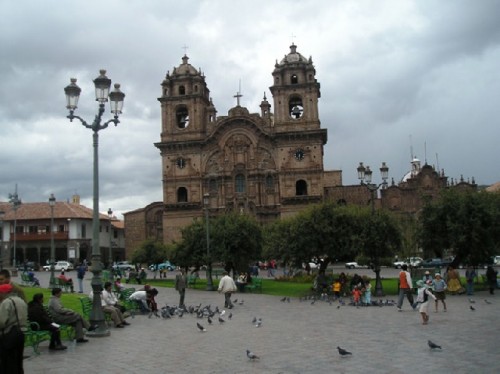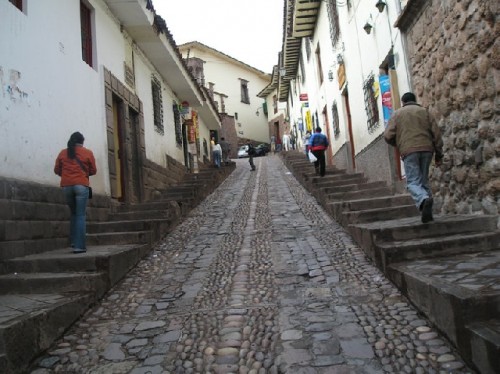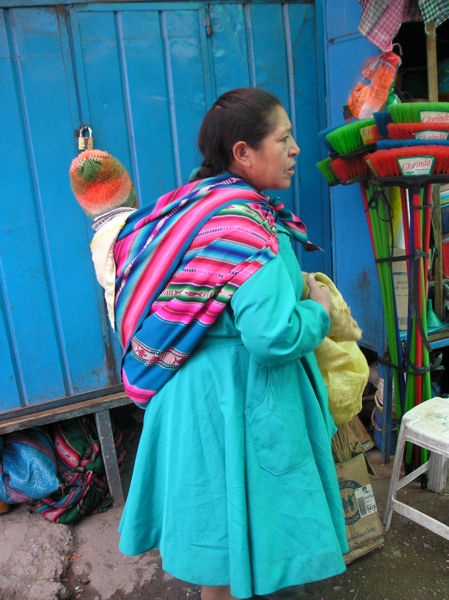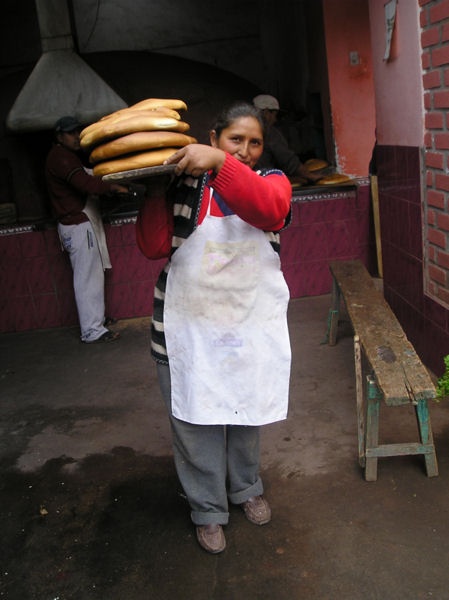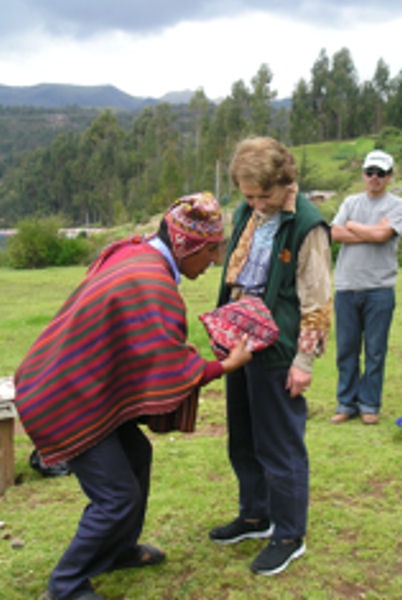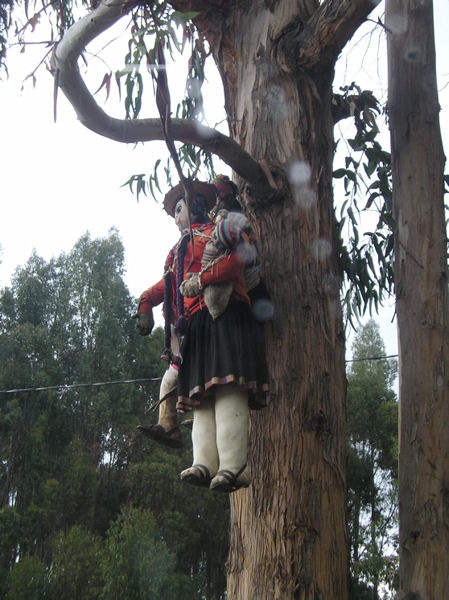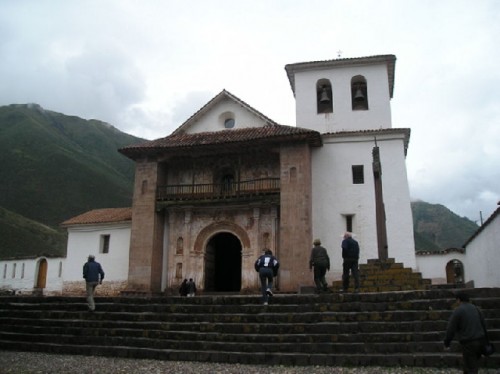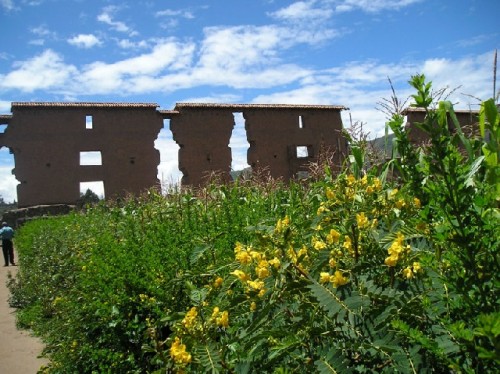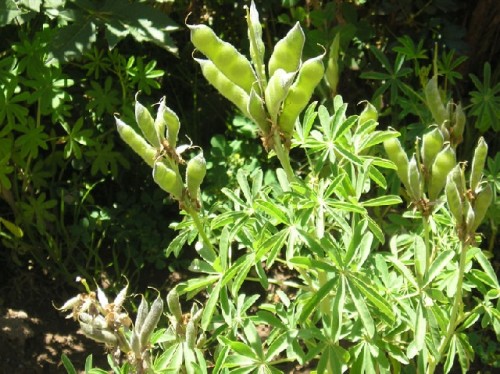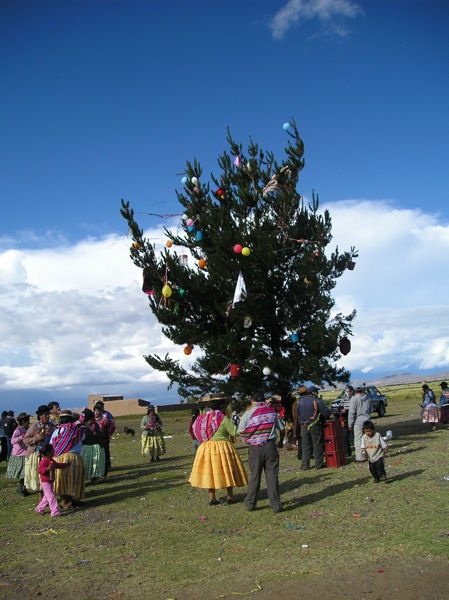Peru: Part Three
Cusco to Puno
By: Zeren Earls - Sep 15, 2007
Cusco
Our two full days in Cusco began with a dramatic account of Peru's struggle with terrorists from 1980-94. Two police officers who had been on active duty during those fourteen years took turns introducing us to Peru's recent history: The educated elite provided the leadership to the two terrorist groups, the Shining Path and Tupac Amaru, named after the revolutionary hero who fought the Spanish. The leaders hoped for a new Communist country after visiting Russia, China and Cuba. Their armed groups terrorized the mountain people first and then moved toward Lima, dynamiting police stations and government buildings. Also targeting affluent civilians, they killed 70,000 people until the leaders were captured in 1992. They are all in prison, including American Laurie Berenson. In 2002 President Fujimori assigned a commission to look into the cause of the terrorist activity. The findings highlighted economic differences between rich and poor, accentuating the lack of jobs. The ensuing national reconciliation emphasized education, human rights and building infrastructure, including roads. Peru has taken giant steps to improve its economy, of which tourism is a part.
Cusco was the capital of the Incan Empire, which ruled for over 200 years. A million people live in greater Cusco, 300,000 of whom are in the city proper. It is a picturesque city of red tile roofs stacked against the hills. To get to their homes people climb more than four hundred sidewalk stairs flanking narrow cobblestone streets. Adobe buildings with ornately carved blue and green wooden balconies face the town's colonial square, dominated by the Cathedral, which mixes Spanish Renaissance architecture with stonework of the natives. The Cathedral has examples of paintings from the Cusco School, a 17th-century movement that used rich, dark colors and blended European and indigenous motifs. A painting of the Last Supper depicts Christ and his apostles dining on roast guinea pig and hot peppers. Cusco has South America's oldest university, built in 1692.
Walking distance, to the south of the square, is the Qoricanca Sun Temple, the most important place of worship in the Inca Empire. Now the church of Santo Domingo, the temple's Incan architecture features perfectly fitted mortar less stonewalls and trapezoid niches. These walls were once covered with 700 sheets of gold studded with emeralds and turquoise. Windows were constructed so that sunlight would reflect off the precious metals. To eradicate every trace of "pagan" civilization and in their thirst for gold, the Spanish melted down all the gold into bullion. Nearby is Merced Church, which contains the remains of some of the conquistadors. It has an adjoining monastery and a museum of religious art. The latter has gold and silver altarpieces, the most ostentatious of which is a jewel-studded solid gold monstrance.
Following lunch at a polleria, where the group enjoyed spit-roasted chicken, Sumru and I spent our free time exploring museums. The Incan or Archeological Museum was well worth the visit for its collection of pottery, textiles and gold artifacts. A delightful discovery was the Folk Art Museum, where popular themes were interpreted in fanciful ways, such as a hand-crocheted depiction of the Last Supper. At the Cusco Center for Native Dances, we watched traditionally garbed performers in foot-stomping dances to the accompaniment of reed flutes, panpipes, violin, accordion and drums. Inspired by early agricultural rites, the dances temporarily made us forget that the Incas had lost their showdown with the Spanish. Dinner at Cicciolina's - an upscale Italian restaurant, expensive by Peruvian standards, but worth every dollar spent - topped off the evening.
In the morning we stocked up at the open-air market in anticipation of our visit to the curandero, a shaman/healer who practices traditional folk medicine. In pairs, we set out to locate the items assigned to us by their Spanish name. As soon as Sumru and I mentioned the name chuta to a vendor, we were sent to a stall diagonally across. Delighted with our early discovery, we bought a round loaf of chuta, Cusco's typical flat bread. Mingling with shoppers in Inca sandals made of used tires and carrying babies in embroidered bundles on their backs, the group completed its purchases for the curandero: a cow's head, beans, bunches of giant radishes, fruit, coffee and bread.
On our way to the healer we drove into the hills surrounding Cusco. The fragrance of eucalyptus trees, imported from Australia, permeated the bus. We stopped at an important pre-Incan and Incan site. The massive Sacsayhuaman archeological site sits on a hilltop within a national park overlooking the city. The largest stone of the ancient complex weighs 128 tons. We enjoyed panoramic views as we walked about temples and sites for offerings to the gods.
The curandero was waiting for us on top of a hill by the mountain. Seated in a semicircle facing him, we participated in a ceremony for our group's health. Using the energy of Apus, the sacred mountain, and Pacha Mama, mother earth, he prepared a concoction by first giving us each three coca leaves from the cocoa plant, the combiner of all energy. We "blessed" the leaves by blowing on them toward the mountain, and returned them. Arranging the leaves in the center of a square cloth, he added an assortment of supplies and symbols, such as grains and herbs, and shaped them into a gentle mound. The "blessing" was followed by a sprinkling of rice and small bits of sweets along the edges of the mound, which was finally flattened and bundled into a small rectangular package in an embroidered piece of cloth. Then we individually volunteered for treatment. I stood in front of the curandero pointing to my hands, as they are very sensitive to cold. Starting at my head he moved the "blessed" package slowly all over my body with full concentration on my hands. Believing at least in the placebo effect of our treatment, we said goodbye in gratitude, leaving the staples we had brought with us.
Lunch afterwards included small dishes of corn and fava beans with sauce, quinoa-based Andean soup, and succulent lake trout. The waiter passed around a roasted guinea pig on a platter for us to sample this delicacy, which tastes like something between a chicken and a rabbit. Agave ice cream topped off the meal. On our return to Cusco we stopped at the silver factory, where we watched artisans melt down the ore and shape it into threads and sheets of silver for crafting jewelry studded with semiprecious stones and shells. I bought a silver ring at the modest price of $15 here and a scarf at the alpaca shop, which kept me warm for the rest of the trip. However, my most treasured purchases were two ceramic plates. Inspired by the pottery culture of ancient civilizations, local artisans continue the tradition. One of them, a concave plate, supports the sculptured head of a duck; the other is a black plate made by reducing the oxygen level during firing. Its bold geometric white patterns make it an attractive wall hanging.
Journey to Puno
The next day the six of us continuing on the post-extension trip bade farewell to those returning home, and headed south on a ten-hour journey to Puno and Lake Titicaca near the Bolivian border. The 380-km trip on the two-lane Pan American highway, though lengthy, was both scenic and interesting, with stops at numerous sites. On our gentle climb southward we caught glimpses of Incan walls alternating with cabbage, corn and onion fields. Since the 1968 cultural reform "land must belong to those who work it". Police stopped us a few times and checked under the hood to make sure the engine was not stolen. In one instance they even had to call Cusco to authenticate the van's registration papers.
The route from Cusco to Puno is lined with towns, each with a specialty of its own. We passed by one famed for its black magic and another for its brick-oven-roasted guinea pig, an expensive delicacy eaten on special occasions. House fronts, sprinkled with confetti for the carnival, signaled good luck. Oropesa, meaning "gold weight" is renowned for its chuta wheat bread, made with pork fat. Every home has its own bread oven, its bricks strengthened by women's hair in the mud mix; the ovens burn eucalyptus wood. We stocked up on bread for the hotel and ate one on the spot. Delicious! Finding alternatives to agriculture in the harsh mountain terrain, towns have developed cottage industries. We passed by one, where every family specialized in hand-made roof tiles. The semi-cylindrical tiles are fitted together in constructing the roof, which costs about $150.
Andahuaylillas is a charming little village with cobblestone roads and colonial houses. It is renowned for its ornate 17th-century Jesuit church. With its gilded altar, fine frescos and paintings framed in gold leaf, the village church resembles a cathedral in its sumptuous decoration. A painting in the Cusco School style depicts the holy family in native costume. The church's sculptured saints are taken out for religious processions. Its votive candles offer choices: white for peace, green for prosperity and red for love. People come from as far as Lima to get married here.
Following the Inca Trail south, we passed a road construction to Brazil, Peru's main trading partner, agriculture in return for technology. Roadside buildings served as billboards for political campaigns; women, whose hat styles changed periodically, carried big bundles on their backs to far destinations. Racchi San Pedro is known for the ruins of the largest Incan temple, Viracocha. It sits amidst fields of corn, fava, peas and tarwi with blue and white flowers. Round storage towers with thatched roofs complement the rural setting. Built in 1400, the temple is of stone and adobe. Birds rest in its niches, once used for offerings. Suddenly a loud gunshot pierced the air, killing a woodpecker, a victim of the temple guard. This bucolic land is also known for its natural waters, sought for stomach ailments. From a vendor I bought two strings of bright orange jungle seeds for good luck.
Before our climb to La Raya we had a picnic lunch break at Sicuani, known as the traditional land of writers and poets. Then we drove by a small volcano with hot springs, arriving at La Raya, the highest point of the Cusco-Puno highway at 14,000 feet and the demarcation point between the two regions. We stopped for a panoramic view of the high plateau. Herds of alpacas and vicunas, bred by the area universities' husbandry departments, dotted the landscape. Vendors in colorful native garb lined the length of a wall with their wares on makeshift stalls. My irresistible purchase was a pair of $10 alpaca slippers, which I've been wearing since arriving home.
Descending to the high plains, the Peru Rail speeded by on its way from Puno to Cusco. Excitedly, we spotted the beginning of the Amazon River coming down the mountain peak. We stopped in Pucara, where the famous ceramic bulls that adorn every house are crafted. A tradition that came with the Spanish, these bulls bring good luck. As instructed by Walter, I gave a bag of soap and shampoo to an old woman in exchange for taking her photo. As these items are hard to come by for the poor, they are considered as good as cash. Set back from the road were uniform outdoor units installed by each mud brick house. Distinctly visible with their deep green color and thin air vents, they were toilets that had been donated to all hill country residents by former president Fujimori.
Carnival festivities entertained us in the village of Tijuana, where celebrants in bright red costumes danced by the roadside. Our final stop before reaching Puno was Juliaca, the industrial center of the region with a population of 250,000. People danced around a tree festooned with balloons, to the beat of drums. I went daringly close to take pictures and was sprayed with shaving cream - a common carnival prank. Feeling lucky that it was not a bucket of water thrown at me, I returned to the van. People in this part of the country are related to Bolivians culturally and speak Aymara. They live in unfinished houses, both because they run out of money, and to avoid paying taxes. We entered a toll road for the final stretch of our trip, passing by a cement factory releasing clouds of billowing smoke

